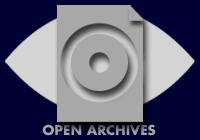Contribute to the DSpace Development Fund
The newly established DSpace Development Fund supports the development of new features prioritized by DSpace Governance. For a list of planned features see the fund wiki page.
Version 3.0
A More Recent 3.x Release Exists: DSpace 3.2
We recommend users upgrade to DSpace 3.2 directly, rather than upgrading to 3.0. The process to do so is documented at: DSpace Release 3.2 Notes
DSpace 3.0 was officially released to the public on November 30, 2012.
DSpace 3.0 can be downloaded immediately at either of the following locations:
- SourceForge (Zip): https://sourceforge.net/projects/dspace/files/
- GitHub: https://github.com/DSpace/DSpace (tag 'dspace-3.0')
Table of Contents:
Why 3.0? What happened to 2.0?
In 2011, after much discussion, the DSpace Committers in conjunction with members of the DSpace Community Advistory Team (DCAT) decided to forgo releasing a "DSpace 2.0".
The reasons for this decision were numerous and include:
- The discussions around DSpace "2.0" have gone through many different revisions over the past 8 years:
- Discussion of "2.0" first began in 2004, with Robert Tansley's DSpace 2.0 Original Proposal
- A reworking of the "2.0" concept happened in 2006, during a DSpace Architectural Review.
- A further reworking of the "2.0" concept occurred in 2008-2009 when a prototype version of DSpace 2.0 was built and demoed at Open Repositories 2009.
- As detailed in the 2.0 history above, much of the planning around a "2.0" is now many years old. Although many great ideas/concepts have come out of that work, much of it does need to be reanalyzed for the modern repository environment.
- "2.0" has always been talked about as a "revolutionary" change to the DSpace software platform. In reality, we've found that many of the platform improvements attributed to "2.0" have been incremental in nature. In fact, several 2.0 code/concepts (from the 2009 DSpace 2.0 Prototype) have been included in almost every recent major release.
- Because the "2.0" release has been perceived as being "revolutionary" in nature, it would be difficult to ever fully meet the expectations/assumptions that have built up around this release.
- We all feel that the DSpace Community's immediate needs are better met by incremental changes (over several releases) than by revolutionary changes (over a single release). We feel that incremental changes provide an easier upgrade path between current and future releases of DSpace.
Many of the ideas/concepts of "DSpace 2.0" may still be coming to the DSpace platform. But, they will continue to be added incrementally over several releases. The ideas behind "2.0" still live on, even while the release numbering has changed.
DSpace has changed its release numbering scheme
With DSpace 3.0, the DSpace Developers will be changing our release numbering scheme. Release numbers will now only consist of two numbers: [major].[minor] (e.g. 3.0, 3.1, 4.0):
- Major Releases: incrementing the first number ('major') will represent a new MAJOR release of DSpace. A major release may include any or all of the following:
- new features
- system improvements
- architectural changes
- bug fixes
- (All major releases end in ".0", so "3.0", "4.0", and "5.0" would all represent major releases.)
- Minor (Bug-Fix) Releases: incrementing the second number ('minor') will represent a new MINOR release of DSpace. A minor release will only include:
- bug fixes to an existing major release (For example, "3.1" and "3.2" would represent two minor releases which only include bug fixes to the "3.0" major release.)
There will be a migration path for users upgrading from v1.8.2 to the 3.0 release.
For more information see DSpace Release Numbering Scheme and the initial DSpace 3.0 Announcement
New features in DSpace 3.0
| DSpace 3.0 ships with a number of new features. Certain features are automatically enabled by default while others require deliberate activation. The following non-exhaustive list contains the major new features in 3.0 that are enabled by default: | |
Completely rewritten OAI-PMH Interface
Kindly contributed by Lyncode | |
Improvements to Solr-based Statistics
Kindly contributed by @mire | |
Batch import for Bibliographic formats
Kindly contributed by the Greek National Documentation Centre/EKT | |
Controlled Vocabulary Support for XMLUI
Kindly contributed by @mire's Kevin Van de Velde | |
Google Analytics support for JSPUI
Kindly contributed by Denys Slipetskyy | |
Improvements to Authentication by Password
Kindly contributed by Mark H. Wood with the support of IUPUI University Library | |
| The following list contains all features that are included in the DSpace 3.0 release, but need to be enabled manually. Review the documentation for these features carefully, especially if you are upgrading from an older version of DSpace. | |
Kindly contributed by @mire with the support of the World Bank
Kindly contributed by CILEA | |
Kindly contributed by @mire with the support of MBLWHOI Library, WHOI, MBL CLI (HPS), ASU CBS and Dryad | |
Kindly contributed by @mire with the support of the University of Michigan Libraries | |
Mobile Theme for XMLUI (beta) Kindly contributed by Elias Tzoc and James Russell with the support of Miami University | |
Kindly contributed by Nestor Oviedo and SeDiCI | |
ElasticSearch-based Usage Statistics
Kindly contributed by Peter Dietz with the support of Ohio State University Libraries | |
Improvements to LDAP Authentication
Kindly contributed by Samuel Ottenhoff | |
More Information
Additional information about DSpace 3.0 may be found in the 3.0 Documentation.
A full list of all changes / bug fixes in 3.0 is available in the History section of the 3.0 Documentation.
(All non-commercial images in the above table are free-to-use images borrowed from elsewhere. In order: OAI-PMH image, chart image, import icon, dictionary icon, key icon, magnifier icon, documents icon, lock icon, phone icon)
Upgrade Instructions
- If you are upgrading from 1.8.x to 3.x, please see Upgrading From 1.8.x to 3.x
- For general upgrade instructions, please see Upgrading a DSpace Installation
Organizational Details
Release Coordination
Instead of a single "Release Coordinator", the DSpace 3.0 release will be managed by a "Release Team".
Release Team Leader
Sands Fish (MIT)
Release Team Members
Sands Fish (MIT), Hardy Pottinger (U of Missouri), Robin Taylor (EDINA, U of Edinburgh), Ivan Masár
Timeline and Processing
- August 24, 2012 : Feature/Code Submission Deadline - New features must be submitted as a GitHub Pull Request by this date. Any new features submitted after this date will not be considered for 3.0.
- August 31, 2012 : Final Documentation Due Date - Initial documentation for all new features is due.
- September 14, 2012 : Feature Freeze - This is an internal deadline for the Committers. This is the date by which the Release Team and Committers will have reviewed via Pull Request, and accepted or rejected all contributions made for the 3.0 release. Rejected code has to wait for the next version of DSpace (or is suggested to be released separate from the current release as a "third party add-on", if applicable).
- October 8, 2012 : Release Candidate 1 is released
- October 10-19, 2012 : Test-a-thon
- October 22-31, 2012 : Bug fixing period
- October 24, 2012 : Release Candidate 2 is released
- October 25, 2012 : Release Candidate 2 is on demo.dspace.org
- October 24-November 1, 2012 : Testing / Bug Fixing
- November 1, 2012 : Release Candidate 3 is released
- November 5, 2012 : Release Candidate 3 is on demo.dspace.org
- November 5-9, 2012 : Test-a-thon (2nd round)
- November 9-25, 2012 : Testing / Bug Fixing
- November 30, 2012 : 3.0 Final Release
Release Process needs to proceed according to the following Maven release process: Release Procedure
3.0 Decisions To Be Documented
- Where should translations of individual modules like Discovery go? Including them in the main messages.xml currently works. This should be answered before freeze time, it already poses another barrier for commiting of translations, see DS-1049, DS-1054. This is a subproblem of i18n Improvements Proposal, but let us not divert this discussion too much to broad topics. ~~helix84
- ANSWER: In mtg on July 25, we decided the best we likely can do for 3.0 is to suggest that translations of individual modules should just be added to the central messages.xml/messages.properties files. For the full discussion see: http://irclogs.duraspace.org/index.php?date=2012-07-25 (starts: [20:57])







